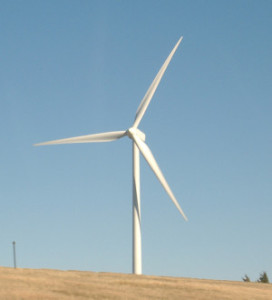Colorado’s current infatuation with industrial wind has left some in the legislature blinded to any possible health impact and unwilling to allow the state even to collect any data or research.

Democrats on the House Transportation and Energy Committee killed HB18-1085, State Representative Paul Lundeen’s (R-El Paso Co) bill to allow the Colorado Department of Public Health and Environment simply to collect a wide array of information regarding what, if any, impact industrial wind has on public health.
Just because Democrats want to ignore it doesn’t mean the issue is going away. In fact, it’s going to get more attention. Democratic gubernatorial candidates along with some elected officials advocate 100 percent renewable energy by 2035 or 2040.
Hearings last month at the Colorado Public Utilities Commission acknowledge that the state is headed toward more and more “renewables,” with industrial wind being the likely source, meaning 400 foot plus industrial wind turbines soon may be coming to a backyard or mountain view shed near you.
This dramatic shift in energy portfolio will be land intensive. According to a recent study from the Independence Institute, a conversion to 100 percent renewable will require somewhere “between 497,596 acres to well in excess of 1.36 million acres, an area the size of Boulder, Broomfield, Clear Creek, Denver, and Jefferson counties combined,” just for the necessary industrial wind.
With rapid expansion, the number and sheer size of industrial wind turbines will increase. The most recent wind project, Xcel Energy’s Rush Creek, includes 300 turbines each with a total height of 440 feet from blade tip to base, approximately one-third the height of the Empire State Building. They will be spread out across 90,000 acres on the eastern plains. A region few Denver-centric lawmakers dare to tread.
But I wish they would.
They need to meet some of the people who live in Calhan, a small community (795 residents according to the 2016 census) about 45 minutes east of Colorado Springs with one main road going through town.
Some of the residents are suffering, because, according to them, living within the shadow of the Golden West industrial wind project has left them in deteriorating health. One resident has a 427-foot industrial turbine within 1600 feet of her home.
They complain of sleep disorders, anxiety, dizziness, nausea, and headaches. They say their animals are suffering as well from stray voltage. These people are convinced industrial wind is causing them harm, and they are desperate for answers and solutions. Their solution is to shut down the turbines.
That’s what happened in the town of Falmouth, MA, after residents complained about the health impact of two 400 foot turbines.
Naturally the wind industry claims there are no health impacts and cites its own research and data as proof. That’s a little like taking the tobacco industry’s word on the health impacts of cigarettes.
![]() The point is we don’t know because studies are few and far between and mostly come out of Europe. They aren’t easily located through simple Google searches and some peer reviewed material isn’t available free of charge. That’s why Lundeen introduced HB-1085 “Concerning the Health Impacts of Industrial Wind” to require the state to collect the data and make it publicly available to all concerned Coloradans.
The point is we don’t know because studies are few and far between and mostly come out of Europe. They aren’t easily located through simple Google searches and some peer reviewed material isn’t available free of charge. That’s why Lundeen introduced HB-1085 “Concerning the Health Impacts of Industrial Wind” to require the state to collect the data and make it publicly available to all concerned Coloradans.
Committee Democrats Faith Winter, Barbara McLachlan, Jeff Bridges, Daneya Esgar, Joann Ginal, Chris Hansen, Dominique Jackson, and Dylan Roberts disagreed and killed the bill.
Some committee members had the intellectual dishonesty not to want to single out one industry. Their yearly ritual of legislative bludgeoning of the oil and gas industry must have slipped their collective minds, as did an entire state agency focused solely on oil and gas.
Visitors to the Colorado Oil and Gas Conservation Commission (COGCC) Web site will find one-stop-shopping for everything related to the industry including an entire “Library” of presentations, reports, and even public forums.
Industrial wind may be a rural Colorado issue right now – and admittedly some folks aren’t bothered – but it’s coming to a backyard near you. My guess is infatuation will diminish when a 600 foot industrial wind turbine hits a little closer to home.
Until the state acknowledges it has a responsibility to know and inform on the possible impacts of industrial wind, here are two resources. Check out the library at the Wind Action Group, a group “formed to counteract the misleading information promulgated by the wind energy industry and various environmental groups” or visit the wind industry trade association American Wind Energy Association.
Coloradans deserve to hear both sides and are smart enough to make up their own minds.
In the meantime, I’ll keep being the voice of those living in the shadow of industrial wind until the state starts to listen.
Amy Oliver Cooke directs the Energy and Environmental Policy Center at the Independence Institute, a free market think tank in Denver.


